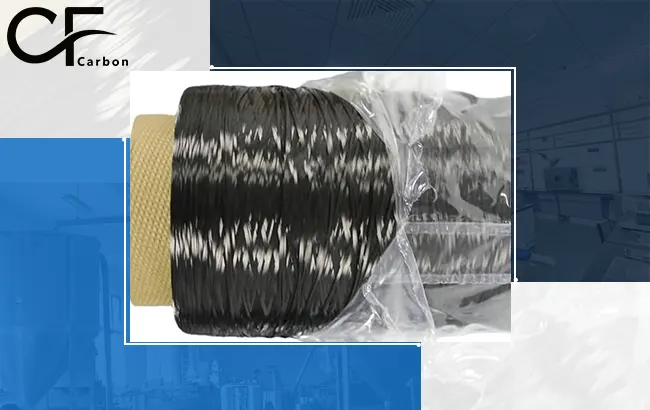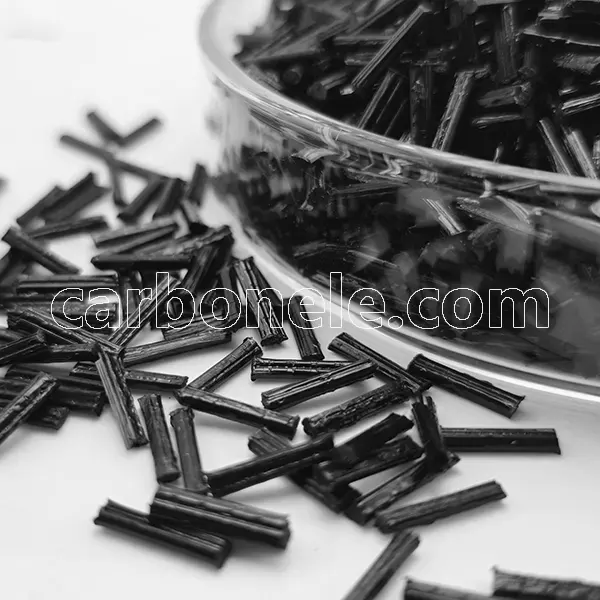Carbon Fiber: T300, T700, T800 & T1100 - Carbon Fiber Compounds Manufacturer | Supplier
Which classifications is carbon fiber divided into? -Just like stars that have different brightness, T300, T700, T800 and T1100 in the carbon fiber family are all shining brightly in different application areas, and together they are drawing a magnificent picture of science and technology.
I. The Meaning of Carbon Fiber Tensile Strength Grade Identification
In the field of advanced materials, “T” is used to identify the tensile strength grade of carbon fiber. For notations like T300 and T700, the numbers following them correspond to the tensile strength indicators (with the unit of MPa). Generally, the larger the number, the higher the tensile strength and the better the mechanical properties, since tensile strength is a crucial indicator for measuring the resistance to damage of carbon fiber. For example, the tensile strength of T300 is about 3,500 MPa, which is relatively low, while that of T800 is over 5,500 MPa. Thanks to its strength advantage, T800 is suitable for application scenarios with high strength requirements and performs excellently in high-end manufacturing.
II. Mechanical Properties
(I) Tensile Strength
– T300: As an early product, its tensile strength is stably around 3,500 MPa. Although it’s not outstanding nowadays, it was significant at that time. With its cost-performance advantage, it has been widely used in scenarios where extreme strength requirements are not necessary, such as building reinforcement, industrial parts manufacturing, and sports equipment production.
– T700: It came into being with the progress of technology, and its tensile strength can reach around 4,900 MPa, which is more than 38.8% higher than that of T300. It can meet the high strength requirements of complex industrial parts and high-end sports equipment, helping to ensure the stable operation of equipment and support athletes’ efforts and sprints.
– T800: Its tensile strength exceeds 5,500 MPa, making it crucial in the aerospace field. For example, the main load-bearing structural parts of aircraft and satellite components rely on its strength to cope with extreme forces. It is also used in high-end sports and high-performance automobiles to improve the quality of products.
– T1100: With a tensile strength higher than 6,000 MPa, it belongs to high-performance carbon fiber and is used in high-end fields with extreme strength requirements, such as key parts of aerospace vehicles and high-end racing car structures, ensuring the stability of structures under extreme working conditions.
| Carbon Fiber Model | Tensile Strength (MPa) | Tensile Modulus (GPa) | Production Process | Main Application Fields | Price Situation |
|---|---|---|---|---|---|
| T300 | Approximately 3500 | Approximately 230 | Wet Spinning Process | Building reinforcement, general industrial parts, sports equipment, etc. (Scenarios that are cost-sensitive and have non-extreme performance requirements) | The lowest price |
| T700 | Approximately 4900 | Approximately 230 | Dry-jet Wet Spinning Process | Parts of aerospace structures, lightweight components of automobiles, ships, etc. | Higher than T300, with relatively high cost-performance ratio |
| T800 | Above 5500 | Relatively higher | Dry-jet Wet Spinning Process | Main load-bearing structural parts of aircraft, satellite structures, etc. in aerospace, high-end sports equipment, high-performance automobiles, etc. | Higher price |
| T1100 | Above 6000 | At a relatively high level | Dry-jet Wet Spinning Process | Advanced aerospace vehicles, high-end racing cars, etc. (High-end fields with extremely demanding material performance requirements) | Relatively high price |
Notes:
1. The tensile strength values provided for each carbon fiber model are approximate figures and may vary slightly depending on different manufacturers and specific production batches. However, the general trend of increasing strength from T300 to T1100 remains consistent across the industry.
2. The production process plays a crucial role in determining the performance characteristics of carbon fiber. The transition from the wet spinning process used in T300 to the dry-jet wet spinning process in higher models like T700, T800, and T1100 leads to improved fiber quality and enhanced mechanical properties, enabling their application in more demanding fields.
3. Regarding the price situation, while T300 is the most affordable due to its relatively simple production process and lower performance, the higher-priced T800 and T1100 are mainly targeted at high-end applications where performance outweighs cost considerations. T700 strikes a balance between performance and cost, making it widely adopted in various industries.
(II) Tensile Modulus
– T300 and T700: Their tensile modulus is approximately 230 GPa. When subjected to external forces, they have similar deformation performances and can provide mechanical support for scenarios with certain rigidity requirements, such as civil building reinforcement.
– T800: Its tensile modulus is relatively higher, and it has excellent anti-deformation ability when subjected to forces. It is of great importance in fields like aerospace that require high structural precision, for example, ensuring the precise shape of aircraft wings and the safety and stability of flights.
– T1100: Its tensile modulus is at a high level, which, combined with its ultra-high tensile strength, enables the structure to have strong bearing capacity as well as good rigidity and dimensional stability. It helps to build a stable structure for high-end equipment to cope with extreme environments and impacts.
III. Production Processes
(I) T300
T300 adopts the wet spinning process. The polyacrylonitrile solution is sprayed into the coagulating liquid through a spinneret to form fibers. The surface of the fibers is in a bark-like shape with grooves. This process is simple to operate and has low costs, making T300 affordable and widely used. However, due to the difficulty in controlling the microscopic structure, there are limitations in improving the tensile strength and other performances as well as the smoothness of the fiber surface, so it’s hard for it to meet the requirements of high-end applications.
(II) T700 and Above Models
T700 and higher models use the dry-jet wet spinning process. There is an air layer between the spinneret and the coagulating liquid. The solution first passes through the air layer and then enters the coagulating liquid. This makes the fibers more regular and endows them with better performance. The fiber surface is smoother, which can reduce friction resistance and improve the composite performance. However, this process has high requirements for equipment and personnel and is costly. Fortunately, it can meet the high-performance requirements of high-end manufacturing and is valuable for applications in high-end fields.
IV. Application Fields
(I) T300
T300 is a representative of general-purpose carbon fiber in the early stage. With the advantage of a balance between performance and cost, it has been widely used in building reinforcement, industrial parts, and sports equipment fields. Although it has been gradually replaced in high-end fields, it still plays an important role in scenarios that are sensitive to cost and do not have extreme performance requirements.
(II) T700
T700 is a new generation of general-purpose carbon fiber. It has found a good balance between performance and cost and is widely used in aerospace, automobile, and shipbuilding fields. It can reduce the weight of components, enhance strength, and improve relevant performances, thus promoting the development of these industries.
(III) T800
T800 plays a key role in the aerospace field and is used in key structures of aircraft and satellites to ensure their safe operation. It is also applied to high-end sports equipment and high-performance automobiles to improve the performance of equipment, driving experience, and the competitiveness of products.
(IV) T1100
T1100 is at the top of the carbon fiber field and is used in key parts of high-end fields such as aerospace vehicles, high-performance military equipment, and high-end racing cars. It can improve the performance of equipment and ensure the reliability of structures under extreme working conditions, thus promoting the development of relevant technologies.
V. Price Situations
(I) T300
Due to its simple production process and relatively low performance, T300 has an affordable price and is the first choice for application scenarios that are sensitive to cost. Although it is limited in high-end fields, it is widely used in ordinary civil buildings, general industrial parts, and mid- to low-end sports equipment with its price advantage and has high cost-performance.
(II) T700
The price of T700 is slightly higher than that of T300. Although the dry-jet wet spinning process it adopts increases the cost, the performance improvement enables it to be used in high-end fields. Moreover, with the maturity of production technology and the increase in output, the unit cost has been effectively controlled, and it has good cost-performance and occupies an important position in the carbon fiber market.
(III) T800 and T1100
T800 and T1100 belong to the high-end carbon fiber camp. They have complex production processes, excellent performance, and high prices, and are mainly used in high-end fields that are not sensitive to price and have strict performance requirements. Due to the high production guarantee costs and the high requirements of application fields, their prices keep rising. However, in high-end projects, the performance advantages of them far outweigh the consideration of price. They provide a solid foundation for the manufacturing of high-end equipment and help the development of key fields.
T300, T700, T800, and T1100 each have their own characteristics, production processes, application fields, and price positions. Together, they form a rich application landscape of carbon fiber and play an indispensable role in the development of modern science and technology and high-end manufacturing. Moreover, their performance and application range are expected to expand with the progress of material science and technology.
Learn more information on carbon fibers or CFRTPs, please contact Carbon (Xiamen) New Material or click here directly.
Previous News
DIfferent Between TPU and TPU-CFNext News
How to improve the dispersion uniformity of car...
Feature Product
-
PA12 LCF30 for Drone Fuselages & Wings
What do you know about PA12 LCF30? PA12 ...
-
Competitive Price PA6 LCF30 Composites
What’s it? PA6 LCF30, which stands...
-
ABS CF10 Compound ABS 10%CF Thermoplastic Compo...
What’s ABS CF10? ABS CF10 refers t...










